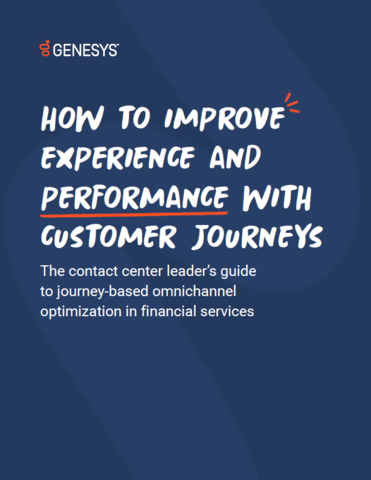Why every company needs an embedded finance strategy now
Sponsored by OpenPayd
Dr Ozan Ozerk, Founder, OpenPayd
Embedded finance is getting a lot of attention as the biggest technology platforms and consumer services embrace it. While this is fuelling the momentum right now, the biggest impact this important trend will have is within business-to-business interactions.
The rise of embedded finance has been fuelled by a combination of friendly regulation, acceleration towards a cashless society and e-commerce growth around the world. These factors have opened opportunities for any company with a large, engaged consumer base to embed financial products and services in the context of their customer experience.
Embedded finance can have a much greater benefit for businesses than just improving the way they interact with customers, though. It can also help them to improve internal financial management by scaling payment flows and simplifying treasury, as well as laying a new foundation for data-enabled innovation in the future.
E-commerce fuels the need for embedded finance
Over the past ten years, a couple of important trends have helped make embedded finance so relevant today.
The first has been the move by various regulators across the world to open up finance by using technology to make services more accessible to consumers and third-party providers. A good example is the Open Banking or Second Payment Services Directive (PSD2) that exists in the UK and Europe.
The second significant trend is the gradual but seemingly unstoppable move from a cash society to a digital one that is occurring around the world. In China, where superapps such as WeChat and AliPay dominate, cash has almost disappeared, and we are seeing a similar trend occurring virtually everywhere else.
As this occurs, the frictions of digital payments within e-commerce are exposed, both for consumers using these services and companies that have built their business models in this industry. These frictions are numerous but they essentially boil down to having to interact with multiple payment providers and banks when you sell to customers, buy from suppliers or pay your staff.
Embedded finance eases these frictions by providing API connections to financial infrastructure, so that financial products and services can be accessed easily within your existing user experience.
Offering finance to customers in context
Embedded finance offers service providers the opportunity to improve their experience, to increase the stickiness of their products and to offer more services for customers to buy.
Many of the biggest tech companies are taking this opportunity, with Chinese superapps showing the way as to what is possible. These apps are marketplaces for lifestyle services but they run on a financial backbone that you don’t really see.
This is an important factor in why consumer service providers choose to adopt an embedded finance strategy. It’s about embedding financial services to improve the experience for customers by offering them what they need in a context they understand.
This could mean an e-commerce provider offering options such as buy-now-pay-later at the checkout, a car dealership offering insurance when a customer buys a car, or a real estate agent offering a mortgage when someone wants to buy a house.
Shopify, the online store platform for e-commerce merchants, is a standout example of an API-enabled tech company that is embracing this trend to improve the experience for its customers by offering a whole range of embedded finance services.
Better management of business finances
Although there is a lot of focus put on the enhanced consumer experience that embedded finance can enable, the significance of this important trend does not end with offering financial products and services to customers.
In fact, embedded finance may have the most significant impact within the business-to-business setting. This is because there are so many improvements to be made in how companies transact and how they manage their internal finance operations.
Embedded finance offers a solution to all sorts of big issues for globally oriented businesses that want to increase their sales and cut their costs. It can help them to improve everything from payment processing to payroll, insurance, compliance and many other internal finance functions.
If you take the example of a large, global retail business with a significant high street and online presence, embedded finance can do a huge amount to solve complex operational issues. That’s because, even though these businesses may generate impressive sales, they may well have lots of internal finance processes that are done manually and which could be improved enormously.
Embedded finance provides these businesses with the opportunity to plug into finance infrastructure and locally regulated services in markets across the world, so the process of transacting across various countries is made much easier. APIs make this possible, allowing businesses to settle funds, reduce FX losses and improve cash flow.
How data will fuel embedded finance’s growth
The dual benefits of being able to offer more services to customers while also improving a wide range of internal finance processes are why so many businesses are adopting an embedded finance strategy.
These are the benefits that businesses can see straight away but, by embracing embedded finance, they are also setting themselves up to capitalise on this important trend over the long term. That’s because, by simply getting started with it now, they can take advantage of the rich data it provides to build innovative services in the future.
The apps of the future, which will be built on the foundations that embedded finance enables, will know who their users are, what they want and how they spend their money better than anyone else. This might sound scary but it can benefit both the company and its users.
On the one hand, consumers get faster, easier access to services, as well as suggestions about which financial product is the best fit for their particular needs. On the other hand, businesses are able to streamline processes and use better data to improve internal processes around FX, cash flow and compliance.
This is why embedded finance is gaining momentum and why businesses should embrace it now to benefit long into the future.
Contact OpenPayd today to learn more about embedded finance.

Business Reporter Team
Most Viewed
23-29 Hendon Lane, London, N3 1RT
23-29 Hendon Lane, London, N3 1RT
020 8349 4363
© 2024, Lyonsdown Limited. Business Reporter® is a registered trademark of Lyonsdown Ltd. VAT registration number: 830519543
Join the Business Reporter community today and get access to all our newsletters, and our full library of talk show episodes
Join the Business Reporter community today and get access to all our newsletters, and our full library of talk show episodes





